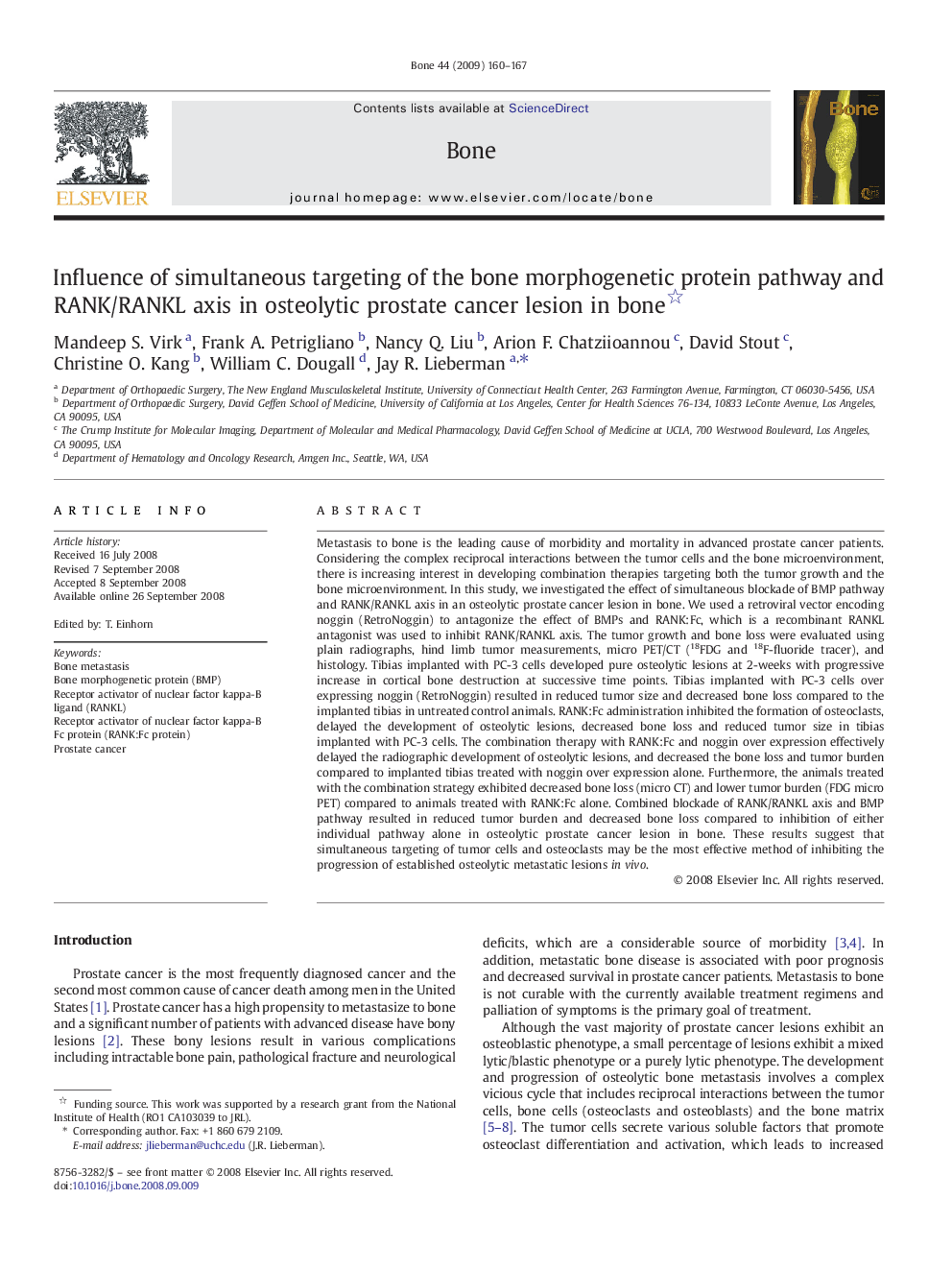| Article ID | Journal | Published Year | Pages | File Type |
|---|---|---|---|---|
| 2781957 | Bone | 2009 | 8 Pages |
Metastasis to bone is the leading cause of morbidity and mortality in advanced prostate cancer patients. Considering the complex reciprocal interactions between the tumor cells and the bone microenvironment, there is increasing interest in developing combination therapies targeting both the tumor growth and the bone microenvironment. In this study, we investigated the effect of simultaneous blockade of BMP pathway and RANK/RANKL axis in an osteolytic prostate cancer lesion in bone. We used a retroviral vector encoding noggin (RetroNoggin) to antagonize the effect of BMPs and RANK:Fc, which is a recombinant RANKL antagonist was used to inhibit RANK/RANKL axis. The tumor growth and bone loss were evaluated using plain radiographs, hind limb tumor measurements, micro PET/CT (18FDG and 18F-fluoride tracer), and histology. Tibias implanted with PC-3 cells developed pure osteolytic lesions at 2-weeks with progressive increase in cortical bone destruction at successive time points. Tibias implanted with PC-3 cells over expressing noggin (RetroNoggin) resulted in reduced tumor size and decreased bone loss compared to the implanted tibias in untreated control animals. RANK:Fc administration inhibited the formation of osteoclasts, delayed the development of osteolytic lesions, decreased bone loss and reduced tumor size in tibias implanted with PC-3 cells. The combination therapy with RANK:Fc and noggin over expression effectively delayed the radiographic development of osteolytic lesions, and decreased the bone loss and tumor burden compared to implanted tibias treated with noggin over expression alone. Furthermore, the animals treated with the combination strategy exhibited decreased bone loss (micro CT) and lower tumor burden (FDG micro PET) compared to animals treated with RANK:Fc alone. Combined blockade of RANK/RANKL axis and BMP pathway resulted in reduced tumor burden and decreased bone loss compared to inhibition of either individual pathway alone in osteolytic prostate cancer lesion in bone. These results suggest that simultaneous targeting of tumor cells and osteoclasts may be the most effective method of inhibiting the progression of established osteolytic metastatic lesions in vivo.
